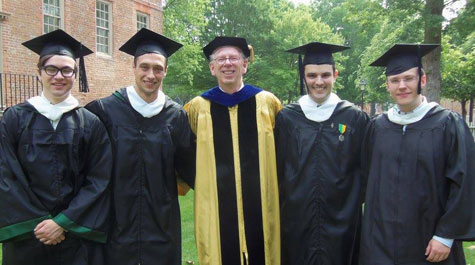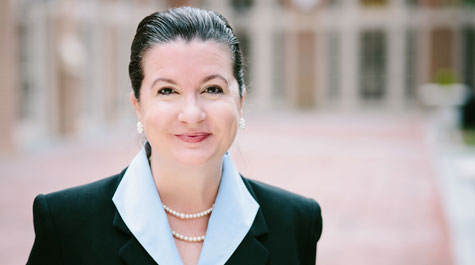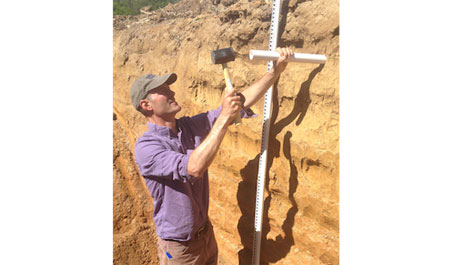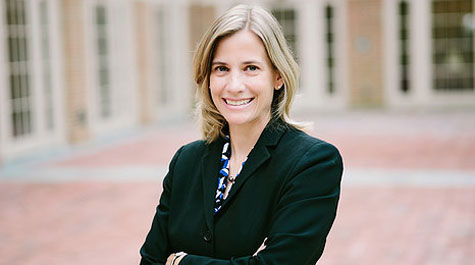W&M faculty in the media this month
Following are selected examples of William & Mary faculty and staff members in the media. - Ed.
Hampton Roads' solution to stop the land from sinking? Wastewater
In a Oct. 21 Washington Post article, Gregory S. Hancock, a professor of geology at William & Mary, discussed how the Hampton Roads Sanitation District is using wastewater to possibly keep Hampton Roads’ coastal region from subsiding and ultimately being claimed by the rising sea. Researchers will see if millions of gallons of wastewater can be purified to drinking water quality so that it can be put into the ground.
According to the Post, if successful, the initiative could start to replenish a giant aquifer that thousands of local residents and businesses in the area are sucking dry. Over the past 50 years, they’ve collectively used so much water that land there is falling 4 millimeters a year.
The idea of using wastewater as a method of correcting the problem was offered back in 2015. Reception of the plan did raise a few eyebrows but was given the go ahead to start in September 2016.
The article did mention the fact that the problem of areas sinking in the Hampton Roads region is quite similar to that of what’s going in in California’s San Joaquin Valley. Farmers have pulled so much water from aquifers since the 1920 that the valley has sunk nearly 28 feet.
Experts agreed that this isn’t something to take lightly.
“If we continue to remove the amount of water that we’re removing now, in the future those aquifers won’t be very useful,” said Hancock.
Hancock also believes that permanent damage could take only a few years or decades.
“They’ll never be able to hold as much water as they used to,” he said.
How to successfully rebrand your promo products business
In an Oct. 19 Advertising Specialty Institute article, Dawn Edmiston, clinical professor of marketing at William & Mary’s Raymond A. Mason School of Business, discussed how businesses large and small can rebrand themselves in the age of social media.
According to the article, companies rebrand their public image for a variety of reasons. It can also have a significant impact on their success moving forward. The article also stated that many small-business owners think that rebranding is a simple task like changing their websites or logo.
At some point, a company is compelled to overhaul its image in the name of enhancing its position in the market. Whether that means rebranding through acquirement or name and logo change, it’s harder than it seems. In addition, when businesses try and be too stylish it could hurt in the long run.
“Brand equity is your single greatest assets,” said Edmiston. “A rebrand fails when companies choose a trendy name.”
Beware of financial advisers who make a good first impression
In a Oct. 9 Wall Street Journal article written by Julie Agnew, an associate professor of economics and finance at the Raymond A. Mason School of Business at William & Mary, she discussed how consumers should be aware of financial advisers who can come off as “too good to be true” when meeting for the first time.
The article states that people’s abilities to choose sound financial advisers and their aptitude for judging the quality of advice they receive can be questionable.
Results from a study that Agnew collaborated in which that 1,000 participants viewed financial advice presented by actors playing financial advisers confirmed that “first impressions’ matter and influence people’s decisions to follow an adviser later, she said. The experiment showed two types of advisers giving each participant good or bad advice on four subjects some that were easy and difficult to understand.
Observers were able to determine whether the difficulty and order of the advice topics, and the quality of the advice given, influenced the participants’ choices and appraisal of advisers. Also, if a financial adviser gave bad advice on an easily understandable topic, made a bad initial first impression, the participants were less likely to choose that adviser again.
“Our research also offers some pointers to investors. First, investors should be wary of trusting their initial feelings when choosing an adviser,” said Agnew. “Instead, they should conduct their own due diligence and not be afraid to ask for second opinions. Acceptable in medicine, second opinions can help periodically confirm the quality of advice, especially if the financial decision is significant.”
VP candidate Kaine's faith an influence, sometime struggle
In an Oct. 4 article by the Associated Press, John J. McGlennon, professor of government and public policy at William & Mary, discussed how vice presidential candidate Tim Kaine uses his Catholic faith which sometimes conflict with his political decisions as his moral guide.
According to the article, after Kaine was nominated, he didn’t go to a political meeting or event, he went to church with his family. It is also stated that Kaine has balanced religion and politics. Often times he has put his faith aside in order to fulfill his duties as a governor and senator. He's personally against abortion but has consistently voted in favor of abortion rights.
"His religious devotion has always been a big part of his public persona," said McGlennon. “He does have a very good way of connecting with voters so that they can see something of themselves in him."
 Skip to main content
Skip to main content




